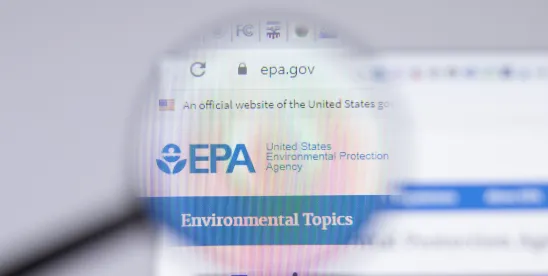On June 16, 2025, the U.S. Environmental Protection Agency (EPA) filed a motion with the U.S. Court of Appeals for the Fifth Circuit requesting that litigation over its 2024 final rule regulating chrysotile asbestos under the Toxic Substances Control Act (TSCA) be held in abeyance for an additional six months. According to the filing, EPA intends to initiate a new notice-and-comment rulemaking to reconsider certain provisions of the rule. The litigation, Texas Chemistry Council, et al. v. EPA, consolidates challenges brought by industry associations and public health organizations. This development follows a broader trend of regulatory and legal complexity surrounding asbestos in the United States — particularly under TSCA.
Chrysotile asbestos, also known as “white asbestos,” is one of six types of naturally occurring, toxic, carcinogenic, fibrous silicate minerals known collectively as asbestos. Chrysotile asbestos is the main form of asbestos in current use globally and is the only type of asbestos still regulated for use and import in the United States. Historically, asbestos’ thermal and electrical insulation properties, as well as its fire resistance, made it a popular building material, with U.S. asbestos consumption hitting its peak in the 1970s and 1980s. Chronic exposure to and inhalation of asbestos fibers can lead to lung conditions such as asbestosis and mesothelioma, with those employed by certain industries generally at higher risk. The use of asbestos as a whole has been banned in the European Union, as well as in dozens of other countries and territories, with a few countries allowing for exemptions for minor uses. Asbestos continues to be produced and used around the world, however, including in China, India, Russia, and portions of Southeast Asia.
Asbestos regulation in the United States under TSCA has long been the subject of legal and administrative challenge. In 1989, EPA issued a comprehensive rule under TSCA Section 6 that would have phased out most uses of asbestos. That rule was largely vacated in Corrosion Proof Fittings v. EPA, 947 F.2d 1201 (5th Cir. 1991), where the court held that EPA failed to demonstrate it had selected the “least burdensome” regulatory approach. As a result, many uses of asbestos remained legal in the United States, and federal regulation was limited for decades. TSCA’s 2016 Frank R. Lautenberg Chemical Safety for the 21st Century Act amendments eliminated the “least burdensome” requirement and gave EPA new authority to regulate high-priority substances based on findings of “unreasonable risk” to health or the environment, without consideration of cost in the risk evaluation phase.
The Asbestos Part 1 risk evaluation, finalized in December 2020, was EPA’s first completed evaluation under amended TSCA. The corresponding risk management rule, published on March 28, 2024 (89 Fed. Reg. 21970), marked the first time EPA finalized a ban under its revised Section 6 authority. The 2024 final rule prohibits the manufacture (including import), processing, distribution in commerce, and commercial use of chrysotile asbestos in several conditions of use, including:
- Diaphragms used in chlor-alkali production;
- Sheet gaskets used in chemical manufacturing; and
- Certain automotive and industrial friction products.
Following publication, multiple parties filed petitions for review in the Fifth Circuit. On February 14, 2025, the court granted EPA’s motion to hold the litigation in abeyance for 120 days to allow new Agency leadership to evaluate the rule. In its June 2025 motion, EPA confirmed that it plans to proceed with a new rulemaking.
According to a declaration filed by EPA Deputy Assistant Administrator for the Office of Chemical Safety and Pollution Prevention (OCSPP) Dr. Lynn Dekleva, the Agency intends to revisit certain aspects of the 2024 rule through a formal notice-and-comment process. Areas identified for reconsideration include:
- The applicability of workplace protection requirements in the use of asbestos-containing sheet gaskets in non-titanium dioxide chemical production;
- Whether permanent workplace controls may be sufficient to mitigate unreasonable risk in lieu of a full prohibition in certain conditions of use; and
- The availability and feasibility of technically and economically viable alternatives.
EPA estimates that the full rulemaking process — including stakeholder engagement, proposal, and final rule issuance — will take approximately 30 months. During this time, the current rule remains in effect. EPA anticipates seeking further extensions of the abeyance as the rulemaking proceeds.
Under TSCA Section 6(a), EPA must regulate chemicals found to present an unreasonable risk so that they “no longer present such risk.” In doing so, Section 6(c) requires EPA to consider several factors “to the extent practicable,” including:
- Health and environmental effects;
- Magnitude of exposure;
- Benefits of the chemical for its intended use;
- Reasonably ascertainable economic consequences; and
- The availability of alternatives.
EPA’s reconsideration will likely focus on these factors, particularly the extent to which workplace controls or transition periods might address identified risks while accounting for current industrial reliance on specific uses.
The World Health Organization (WHO) has assessed all forms of asbestos, including chrysotile, as causing several types of cancer and chronic respiratory diseases, and advocates for exposure prevention through legal means and via the use of personal protective equipment (PPE) and limited exposure where asbestos already exists, especially for workers. The International Chrysotile Association (ICA) argues that chrysotile is chemically and mineralogically distinct from other asbestos and can be used safely in modern products under controlled use. ICA cites evolved dust control technology, lower modern exposure limits, the use of higher quality modern materials, and the adoption and application of appropriate prevention and control measures, regulations, standards, work practices and techniques as reasons why chrysotile asbestos can be used safely in critical products.
EPA’s decision to revisit the Asbestos Part 1 rule illustrates the ongoing legal and policy complexities surrounding asbestos regulation. While the 2024 rule was the first final TSCA ban of an ongoing use under the amended statute, the rule now faces potential revision through additional rulemaking. For stakeholders — including manufacturers, importers, and downstream users — this development reintroduces a period of regulatory uncertainty.
Companies with affected uses may wish to monitor the forthcoming notice-and-comment process closely, assess current reliance on chrysotile asbestos, and consider preparing technical and economic information relevant to the feasibility of substitution or workplace exposure mitigation.
EPA’s implementation of TSCA Section 6 continues to evolve through rulemaking, litigation, and administrative review. The outcome of this reconsideration may have broader implications for how the Agency balances technical feasibility, stakeholder input, and statutory mandates in future risk management rules.
If EPA’s full rulemaking process remains on schedule, we can look for a final rule in mid-December 2027.




 />i
/>i
